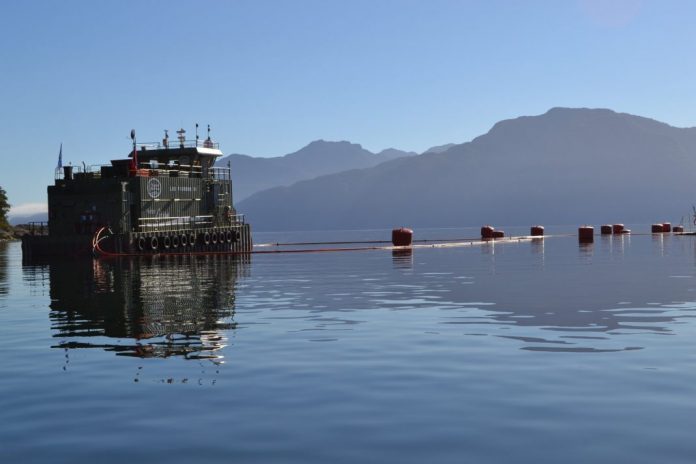More than one million tonnes of salmon were produced in Chile in 2020, the country’s largest harvest since 2007.
Chilean trade body SalmonChile has published its sixth annual sustainability report, highlighting record salmon production figures within the country.
Chile has positioned its salmon-farming sector as a pillar in the national growth and export strategy, growing salmon to become the second-largest export behind copper.
In 2020, Chile’s salmon exports were worth $4.4 billion (€3.8 billion), down 14.3 per cent compared to 2019.
The decrease has been attributed to the effects of the COVID-19 pandemic and outbreaks of toxic algae.
Read more: Chile’s salmon biomass plunges
High value
According to the report, in 2020, more than one million metric tons of salmon were harvested in Chile, the country’s highest value produced since 2007.
The report said Chile’s salmon-farming sector has been working to improve its health indicators through innovation and the adoption of new technologies.
“Projections for the future suggest that the salmon-farming sector will continue to consolidate its position in traditional markets and will eventually open new ones,” SalmonChile said. “The challenge is to continue contributing to food security, maintaining the activity’s decentralizing spirit of the and striving to make the operation compatible with the environment and the communities in which we operate.”
The number of fish escape events increased from five in 2019 to eight in 2020, while the number of fish escaped increased nearly fourfold from 85,697 to 410,150. The mortality rate inched down 0.1 percentage points to 3.4 per cent.
Jobs boon
The report estiates the salmon-farming industry to be responsible for more than 71,000 jobs, with 66 per cent of the jobs concentrated in the Los Lagos Region. In recent years, the industry has focused on skills- and capacity-building, as well as education for employees and within communities, SalmonChile said, with its member companies providing more than 340,000 hours of job-training during 2020.
The report also found that in 2020, SalmonChile companies invested a total of CLP 1.42 billion (USD 1.7 million, EUR 1.5 million) in research and development, with 40 percent of the associates having an R&D department or similarly related area dedicated to R&D activities.
In 2020, SalmonChile’s members had 94 per cent of their total biomass in three primary farmed species – Atlantic salmon, coho salmon, and rainbow trout – certified by to the standards of the Aquaculture Stewardship Council, GlobalG.A.P., or Best Aquaculture Practices programs, up from 83 per cent of certified volume in 2019.


